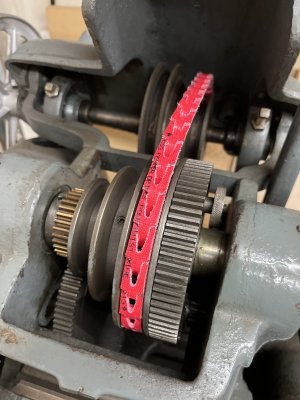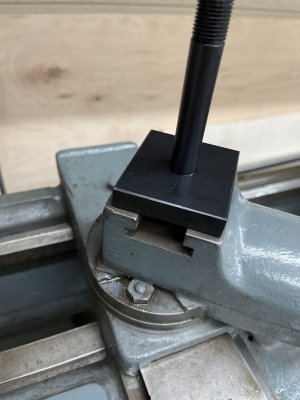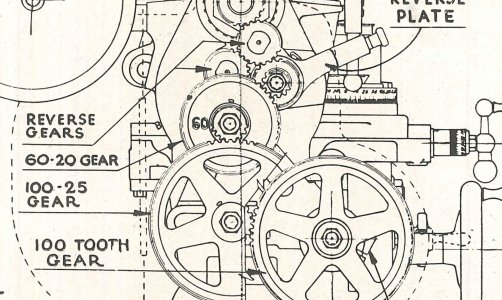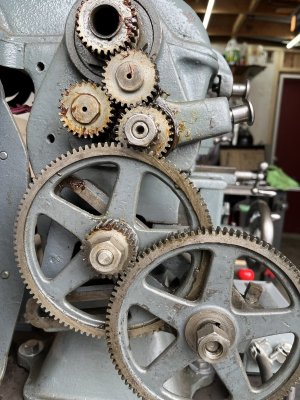Alright den of people much smarter than me…
My power cross feed doesn’t work because the key for the lead screw is missing.
Whats more puzzling is how it’s retained in the bevel drive gear.
You can just make out a small hole at one end of the gear. So maybe a pin goes in there to retain one end.
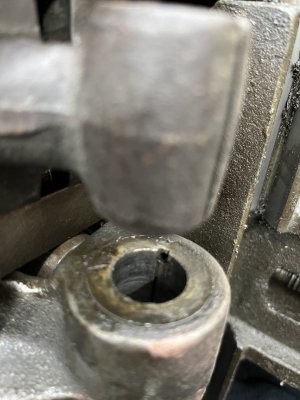
At the bevel gear end I have no idea how it’s retained.
The bevel gear end points toward the headstock so it seem to be that as soon as the carriage is moved toward the tailstock it will come out.
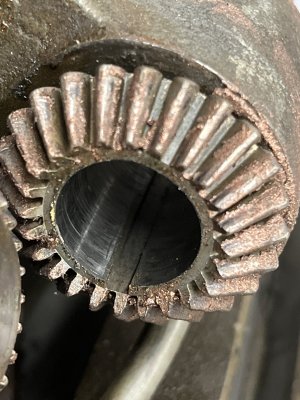
Is it possible that it’s a bent key and one end goes in the hole?
My power cross feed doesn’t work because the key for the lead screw is missing.
Whats more puzzling is how it’s retained in the bevel drive gear.
You can just make out a small hole at one end of the gear. So maybe a pin goes in there to retain one end.

At the bevel gear end I have no idea how it’s retained.
The bevel gear end points toward the headstock so it seem to be that as soon as the carriage is moved toward the tailstock it will come out.

Is it possible that it’s a bent key and one end goes in the hole?

